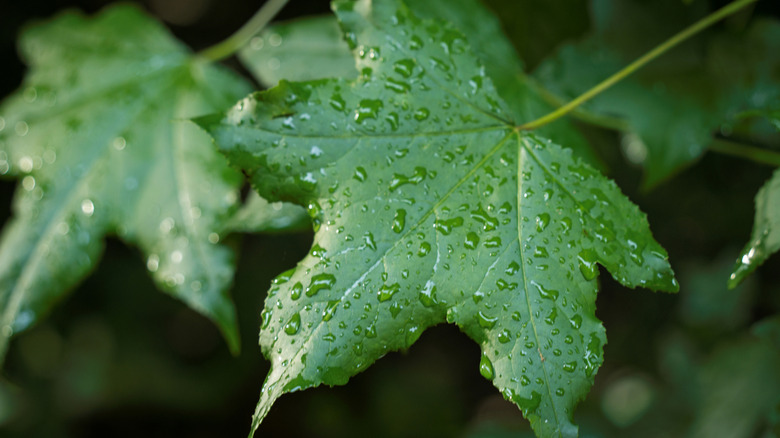Rumor Has It Your Tree Leaves Might Be Able To Predict Winter Weather
Every year, reporters await the emergence of Punxsutawny Phil on Groundhog's Day. If he sees his shadow, it's another six weeks of winter you'll have to endure. This myth of Pennsylvania Dutch origin is a fun cultural institution and an annual milestone in the U.S. But no one takes the outcome of Phil's emergence very seriously. Before meteorologists were able to use hard data to foretell weather down to the hour, people had little more to go on than supposed clues dropped by nature.
One similar natural phenomenon, watching what your trees leaves do in autumn, is purported to predict particular winter weather conditions months in advance. There are even subtleties to look for in the foliage that indicate what kind of cold season will be coming our way. If leaves fall early, a mild winter is afoot, but dry ones that linger on their branches mean that you have very cold weather to look forward to. Apparently, color is also a telltale sign: The more vibrant fall hues you see in fall, the more snow and cold you'll see a few months later. There are some weather phenomena that tree leaves can indeed foretell, but there's no scientific support for their ability to anticipate snow and ice outside.
What weather can tree leaves predict?
While leaves clinging to branches long after they should've fallen isn't a sign that you'll need hacks for a warmer house this winter, not all tree-related weather predictions are old wives tales we should dismiss. Get your rain barrel ready if you see leaves showing their undersides. Meteorologist Tawana Andrew from WAVE in Louisville, KY, confirms that leaves of certain trees can let us know if rain is on its way. According to Andrew, deciduous trees like maple, poplar, and oak, have leaves that can turn limp once there's a sudden increase in humidity like we experience before a rainfall. The leaves' stems are more flexible and vulnerable to winds that often precede a shower, making them flip over more easily than they would on a breezy but dry day.
Although they aren't leaves, Andrew explains that pinecones also can forewarn us of a downpour. Similar to how deciduous tree leaves react to moisture in the air before a rain, pinecone scales open away from their center in dry weather and close when hit with humidity. If you see the cones on your pines close up after being open earlier in the day, you may be in for a sprinkle or more.

